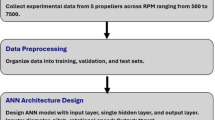Abstract
In modern world of today where air traffic is continuously increasing and available space at the airports remains finite, there is a problem of safe docking of aircraft. The problem needs to be solved to ensure safe and smooth movement of aircraft, passengers and crew while making optimum utilization of available ground space. Without such systems having in place, accidents keep occurring due to human judgment errors. These accidents are causing loss of material costs and human injury. The importance of Video-based Docking Systems is continuously increasing due to the challenges of current and upcoming traffic demands of future. This paper evaluates two neural networks architectures for recognition of civil airliners in a Video docking system. The networks compared are feedforward neural network and probabilistic neural network. The results are compared by presenting data to neural networks while deforming the shape, adding noise and partly occluding the shape and presenting those angles for which network was not trained.




















Similar content being viewed by others
Explore related subjects
Discover the latest articles, news and stories from top researchers in related subjects.References
Siemens Inc (2007) Video docking system catalog. Available on-line at https://www.industry.siemens.com/adb/en/pdf/VDOCKS_pdf.pdf
Honeywell Inc (2007) Video docking system by Honeywell specifications. Available on-line at http://www.airportsystems.honeywell.com/pdf/airfield_catalog/icao_systems/vdgs_sec.pdf
Christopher MB (1996) Neural networks for pattern recognition. Oxford University Press, USA. ISBN-10: 01-9853-8642, ISBN-13: 978-0198538646
Robert M, Michael D-A (1995) Recognition of infrared images of aircraft rotated in 3 dimensions. In: Proceedings of the 3rd Australian and New Zealand conference on intelligent information systems, ANZIIS-95, Perth, University of Western Australia, Australia, pp 82–87. ISBN: 0-86422-430-3
Liqing W, Longhe S (1996) Automatic target recognition using higher order neural network, In: Proceedings of the IEEE 1996 national aerospace and electronics conference, NAECON, Dayton, vol 1, pp 221–226
Stanislaw Os, Do DN (2002) Fourier and wavelet descriptors for shape recognition using neural networks a comparative study. Pattern Recogn J. Elsevier Science, Oxford 35(9):1949–1957
Tien S-C, Chia T-L, Lu Y (2003) Using cross-ratios to model curve data for aircraft recognition. Pattern Recogn Lett 24:2047–2060. doi:10.1016/S0167-8655(03)00042-4
Chia T-L, Tien S-C, Lu Y (2007) Recognize aircraft in ISAR images. J Inf Sci Eng 23:299–313
Besada JA et al (2004) Aircraft identification integrated into an airport surface surveillance video system. Mach Vis Appl 15:164–171. doi:10.1007/s00138-004-0135-8
Zaki M, El-Ramsisi A, Omran R (2000) A soft computing approach for recognition of occluded shapes. J Syst Softw 51:73–83. doi:10.1016/S0164-1212(99)00111-9
Han S et al (2003) Third order moment spectrum and weighted fuzzy classifier for robust 2D object recognition. Comput Math Appl 45:699–707. doi:10.1016/S0898-1221(03)00029-4
Feng Z et al (2008) Aircraft recognition in infrared image using wavelet moment invariants. Image Vis Comput xxx:xxx–xxx
Hsieh J-W et al (2005) Aircraft type recognition in satellite images. IEE Proc Vis Image Signal Process 152(3):307–315. doi:10.1049/ip-vis:20049020
Rihaczek W, Hershkowitz SJ (2001) Identification of large aircraft. IEEE Trans Aerosp Electron Syst 37(2):706–710. doi:10.1109/7.937482
Hagan D, Beale A (1995) Neural network design, PWS Pub. Co.USA. ISBN-10: 05-3494-3322, ISBN-13: 978-0534943325
Author information
Authors and Affiliations
Corresponding author
Rights and permissions
About this article
Cite this article
Ali, S.Z., Choudhry, M.A. A generalized higher order neural network for aircraft recognition in a video docking system. Neural Comput & Applic 19, 21–32 (2010). https://doi.org/10.1007/s00521-008-0224-0
Received:
Accepted:
Published:
Issue Date:
DOI: https://doi.org/10.1007/s00521-008-0224-0




